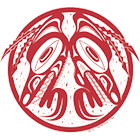NAUT 275V - Cargo Work Level 2 (CG2)
Course Description
This is a course designed to provide ship’s officers and captains with the knowledge and skill required to: monitor the loading, stowage, securing, care during the voyage and the unloading of cargo; safely handle, stow and secure cargoes including dangerous, hazardous and harmful cargoes and their effect on the safety of life and of the ship; establish and maintain effective communications during loading and unloading.
This course follows the guidelines of STCW2010, parallels the framework of the IMO Model Courses and fulfills the requirements of the applicable sections of TP2293 and IMO Model Courses 7.01 and 7.03.
Learner Outcomes
This is a course designed to provide mariners with a basic knowledge of the following regulations and documents:
-
Canadian Code of Safe practice for ships carrying timber deck cargoes;
-
Cargo, Fumigation and Tackle Regulations;
-
Code of practice for the safe loading and unloading of Bulk carriers (BLU Code);
-
Code of Safe Practice for Cargo Stowage and Securing;
-
Code of Safe Working Practices for Self-unloading Vessels;
-
International Maritime Dangerous Goods (IMDG) Code;
-
Safe Container Convention Regulations;
-
Safe Working Practices Regulations;
-
TP 10944 - Notice to Shipmasters Loading Coal;
-
Transportation of Dangerous Goods Act;
-
Transportation and Dangerous Goods Regulations;
-
SOLAS
-
Code of Safe Working Practices For Merchant Seaman
-
Vessel Pollution and Dangerous Chemical Regulations
-
SOLAS, 1974 as amended
-
IMDG Code and supplement
Notes
Textbook
Please purchase prior to the course
- Cargo Work for Maritime Operations, D.J. House - www.nauticalmind.com/69916/cargo-work-for-marine-operations/


